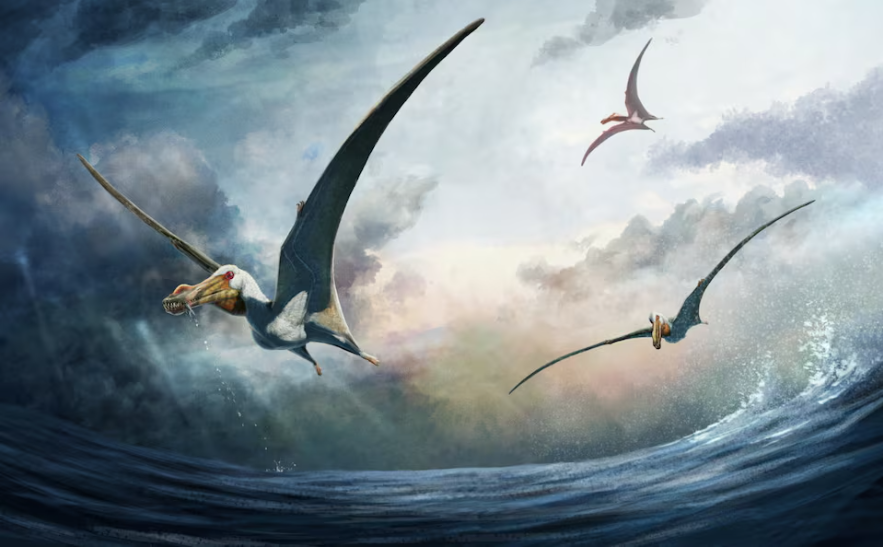
©Curtin University/Gabriel Ugueto/Handout via REUTERS
Pre-reading questions:
- Are you interested in learning about ancient or prehistoric times?
- Have you heard of any discoveries that show how ancient seas and environments were different from today?
Vocabulary:
- powerful /POU-er-fuhl/
- reptile /REP-tahyl/
- jaw /jaw/
- throat /throht/
- remarkable /ri-MAHR-kuh-buhl/
[adjective] – having great strength, force, or ability
The lion’s roar was powerful enough to be heard from miles away.
[noun] – animals with dry, scaly skin that lay eggs on land and breathe air
Learning about reptiles in school, we discovered that they all breathe air and live in diverse habitats around the world.
[noun] – the bones in the mouth area that allow animals or humans to open and close their mouths
The dentist examined her jaw to check for any issues with her teeth alignment.
[noun] – the passage in the neck through which food and air pass
His sore throat made it difficult to swallow.
[adjective] – unusual or special and therefore surprising and worth mentioning
The scientist made a remarkable discovery that changed the field of physics.
Article reading:
True or False:
- Haliskia peterseni was found above the ancient Eromanga Sea.
- Haliskia peterseni has a wingspan of 20 feet (6.1 meters).
- Haliskia peterseni’s name, “sea phantom,” reflects its association with the Eromanga Sea.
- Adele Pentland studies modern life at Curtin University.
- Haliskia’s throat bones were not well-preserved.
Fill in the blanks:
| powerful | reptile | jaw | throat | remarkable |
- Her progress in learning the language was __________, considering she had started only a few months ago.
- The crocodile’s powerful __________ can crush even the toughest prey.
- The singer cleared her __________ before beginning the performance.
- Many __________, such as turtles and snakes, lay eggs on land for their offspring to hatch.
- The hurricane unleashed __________ winds that uprooted trees and caused widespread damage.